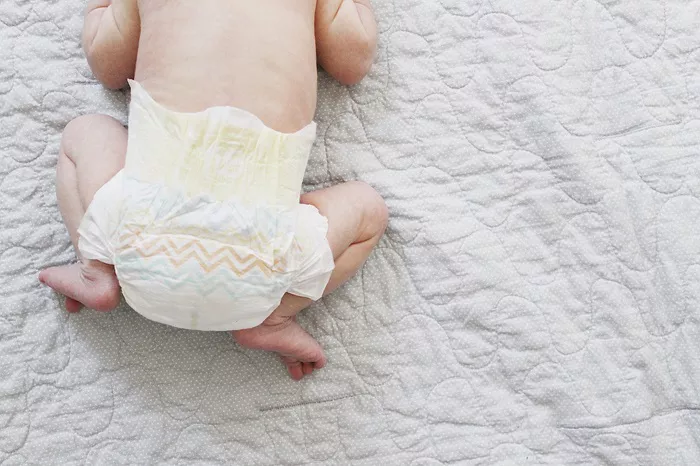Pampers diapers are a popular choice for parents around the world due to their comfort, absorbency, and overall quality. Understanding what goes into making these diapers can help caregivers make informed decisions about their use. Here, we will explore the main components of Pampers diapers, breaking down each part to understand its function and safety.
Key Components of Pampers Diapers
Absorbent Core
The absorbent core is the heart of Pampers diapers. It is designed to keep the baby dry by absorbing and trapping liquid. The core consists of several layers:
Super Absorbent Polymer (SAP): This is the primary material responsible for absorbing liquid. SAP can hold up to 30 times its weight in liquid, ensuring the diaper stays dry.
Fluff Pulp: This is a type of soft, fibrous material made from wood pulp. It helps distribute the liquid throughout the diaper and works in tandem with SAP to keep the baby dry.
Acquisition Layer: This layer sits above the SAP and fluff pulp. It quickly draws moisture away from the baby’s skin and into the absorbent core, reducing the risk of irritation.
Top Sheet
The top sheet is the layer that comes into direct contact with the baby’s skin. It is designed to be soft and gentle while also allowing liquid to pass through to the absorbent core. Key features include:
Softness: Made from polypropylene and polyethylene fibers, the top sheet is soft to prevent chafing and irritation.
Lotion Coating: Some Pampers diapers have a lotion coating on the top sheet. This lotion typically contains petrolatum, stearyl alcohol, and aloe to help protect the baby’s skin.
Back Sheet
The back sheet is the outermost layer of the diaper. It prevents leaks and keeps the moisture contained within the diaper. It is made from:
Polyethylene Film: This waterproof material ensures that liquid does not escape from the diaper.
Breathable Materials: The back sheet often includes breathable elements to allow air circulation, keeping the baby’s skin dry and healthy.
Elastic Waistbands and Leg Cuffs
Elastic components in Pampers diapers provide a snug fit while allowing for movement. These include:
Elastic Waistband: This helps the diaper stay in place, preventing leaks and ensuring comfort.
Leg Cuffs: The elastic leg cuffs create a barrier to prevent leaks around the legs. They are made from spandex or similar elastic materials.
Adhesive Tabs
Adhesive tabs secure the diaper around the baby’s waist. These tabs are:
Refastenable: Pampers tabs are designed to be refastened multiple times, allowing for adjustments as needed.
Secure: Made from a combination of adhesives and flexible materials, the tabs keep the diaper securely in place.
SEE ALSO: Do Pampers Have an Expiration Date?
Additional Features in Pampers Diapers
Pampers diapers are designed with various features to enhance performance and comfort. These include:
Wetness Indicator
Many Pampers diapers come with a wetness indicator. This is a strip on the outside of the diaper that changes color when the diaper is wet. It helps caregivers know when it’s time for a change without having to open the diaper.
Fragrance and Dye
Some Pampers diapers contain fragrances and dyes. These are added to provide a pleasant smell and aesthetic appeal. Pampers uses non-irritating, safe materials to ensure the baby’s skin is not harmed.
Chlorine-Free Processing
Pampers diapers are processed without chlorine, which reduces the risk of chemical exposure to the baby. This process also makes the diapers more environmentally friendly.
Safety and Testing
Pampers prioritizes safety and quality. Each diaper undergoes rigorous testing to ensure it meets high standards. Key aspects of their safety protocols include:
Dermatological Testing
Pampers diapers are dermatologically tested to ensure they are safe for the baby’s skin. These tests check for potential irritants and allergens.
Absorbency Testing
Each diaper is tested for absorbency to ensure it can handle the amount of liquid it claims to. This helps prevent leaks and keeps the baby dry.
Material Safety
All materials used in Pampers diapers are thoroughly evaluated for safety. This includes testing for harmful substances and ensuring the materials are non-toxic and safe for prolonged contact with the skin.
Environmental Considerations
Pampers is committed to reducing its environmental impact. Efforts include:
Sustainable Sourcing
Pampers works to source materials sustainably. This includes using responsibly managed forests for fluff pulp and reducing the use of non-renewable resources.
Recycling and Waste Reduction
The company aims to minimize waste in its manufacturing processes. This includes recycling materials and improving efficiency to reduce the environmental footprint.
Innovative Packaging
Pampers also focuses on using environmentally friendly packaging. This includes using recycled materials and designing packaging that is easy to recycle.
Alternatives and Options
Pampers offers a variety of diaper options to meet different needs. These include:
Swaddlers
Designed for newborns, Swaddlers offer a soft feel and an umbilical cord notch for comfort.
Cruisers
Cruisers are designed for active babies. They offer a snug fit and flexible materials to accommodate movement.
Pure
Pampers Pure diapers are made with carefully selected materials, including plant-based fibers. They are free from chlorine bleaching, fragrance, and latex.
Conclusion
Pampers diapers are a trusted choice for many parents due to their high quality and thoughtful design. The combination of an absorbent core, soft top sheet, secure back sheet, and other features ensures that Pampers diapers provide comfort and protection for babies. Additionally, the brand’s commitment to safety and environmental responsibility makes it a reliable option for caregivers.
By understanding the components and features of Pampers diapers, caregivers can make informed choices that best meet the needs of their babies. Whether it’s the absorbency of the core, the gentleness of the top sheet, or the secure fit provided by elastic waistbands and leg cuffs, every part of the diaper plays a crucial role in keeping babies dry, comfortable, and happy.


